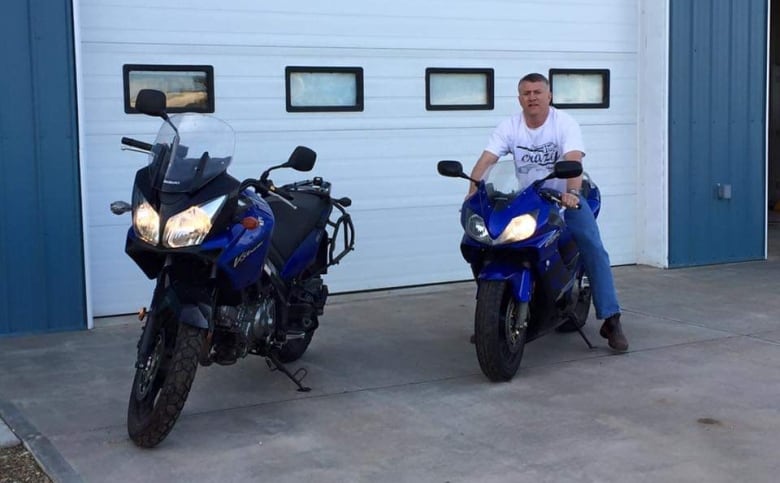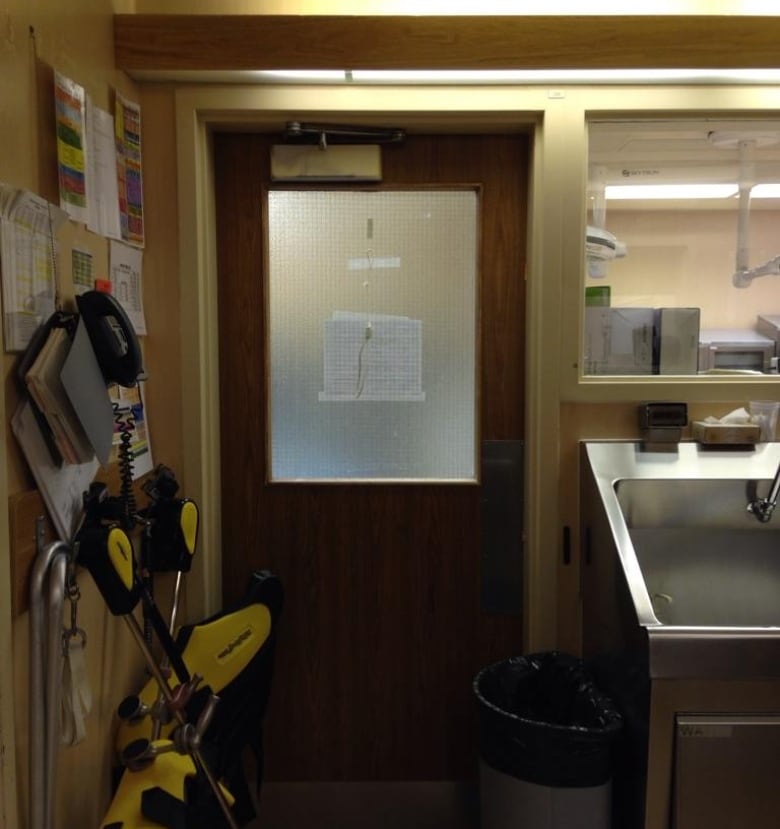Black Grande Prairie doctor testifies he felt threatened by noose tied by white colleague
Dr. Oduche Onwuanyi describes alleged pattern of behaviour from Dr. Wynand Wessels

A Black doctor says the taping by a white surgeon of a noose to a Grande Prairie hospital operating room door in 2016 was a clear threat meant to intimidate him and was part of an escalating pattern of disturbing behaviour that he perceived as racist.
"It is a warning sign, a sign that says, 'You need to be cautious; I am after you,'" Dr. Oduche Onwuanyi said Monday during the first day of a sanction hearing for South African-born surgeon Dr. Wynand Wessels.
"It's a threat, a threat that, 'We could get you off this job.' A threat that, 'We control things around here,'" Onwuanyi told a tribunal of the College of Physicians and Surgeons of Alberta (CPSA).
Another Black doctor testified he provided a CPSA investigator the contact information of other staff at the hospital who told him they had witnessed racist behaviour by Wessels, but none of it was referenced in the college's proceedings.
Dr. Tosin Akinbiyi told the hearing he sent an email to CPSA investigator James West in July 2020 in which he detailed stories told to him by other staff at the hospital. In one incident, Wessels allegedly told an employee, who is not white, that she should not worry about getting iodine on herself.
"Dr. Wessels made comments about it like, 'Don't stress about it, the colour is the same as your skin, and the same colour as shit.'"
In another alleged incident, also provided to West, Akinbiyi said a veteran nurse told him she asked Wessels once about his experience with apartheid, "and the comment he made to her was, 'Those people are vermin.'"
The CPSA announced a hearing for Wessels shortly after CBC News revealed his actions in July last year.
At a disciplinary hearing last October, Wessels denied the noose was meant to be racist or to intimidate or target any person or group.
The CPSA hearing panel found him guilty of unprofessional conduct but ruled there was not enough evidence to conclude that Wessels "was motivated by racism or intended to create a racist symbol when he hung the rope on the door."

In South Africa, Wessels claimed, the noose does not carry the same racist and violent implications it does in North America. Thousands of Black anti-apartheid activists and others were hanged in South Africa during apartheid.
Onwuanyi testified he had worked in South Africa for four years and he said Wessels would know what a noose meant there.
Alleged pattern of behaviour
He testified Wessels, as chief surgeon, did not hire him when he first applied in 2010, even though he was well qualified. When he returned as a surgical assistant in 2014, he said Wessels asked him why he came back.
Onwuanyi told of an incident in which he alleged Wessels purposely elbowed him during a surgery. He said he once told Wessels a story about a Black pilot to which he said Wessels replied: "All those Black pilots, they are drug dealers."
Onwuanyi also said that while Wessels provided letters of apology to two other doctors over the incident, he never apologized to him.

Health Minister Tyler Shandro ordered an investigation by an independent consultant after CBC News revealed the incident. The consultant concluded the noose incident was not racist.
Onwuanyi told the hearing he was not approached for an interview by the consultant.
In an emailed statement Monday night,Donna Neumann, the consultant hired to review the incident, said numerous attempts were made to contactOnwuanyithrough his AHS email address as well as an email alerting staff and physicians of the review.
Neumann said an AHS official was asked to verify the contact information for Onwuanyito allow her to askif hewould like to participate in the review.
These inquiries "did not result in a response," the statement said.
Wessels said noose was for Black colleague: surgeon
The hearing's first witness was surgeon Dr. Scott Wiens, who testified he saw Wessels tie the noose and tape it to the operating room door on June 24, 2016.
When asked who it was for, Wesselsis alleged to havetold Wiens it was for Onwuanyi.
"I interpreted that message as a racist act and an act of a threat to people's personal safety who were working in the room that day."

He said Onwuanyi and Dr. Alika Lafontaine, an Indigenous anesthesiologist, were both working in that operating room.
Wessels' lawyer, James Heelan, spent much of his cross-examination of Wiens seeking to establish that Wiens had promoted the noose incident because of chronic friction between them.
But Lafontaine gave emotional testimony about how this narrative of blame has been used to marginalize "to erase" people of colour and others who report racist incidents.
Lafontaine said how the incident was handled by authorities reminded him of a quote.
"The monopoly on truth is always upstream from a monopoly on violence," he said.
"If you can control the official version of the truth, you can also control how intimidation and oppression and, in this case, racialized violence are normalized and utilized."
The hearing resumes Tuesday.
For more stories about the experiences of Black Canadians from anti-Black racism to success stories within the Black community check out Being Black in Canada, a CBC project Black Canadians can be proud of.You can read more stories here.













_(720p).jpg)


 OFFICIAL HD MUSIC VIDEO.jpg)
.jpg)








































































































